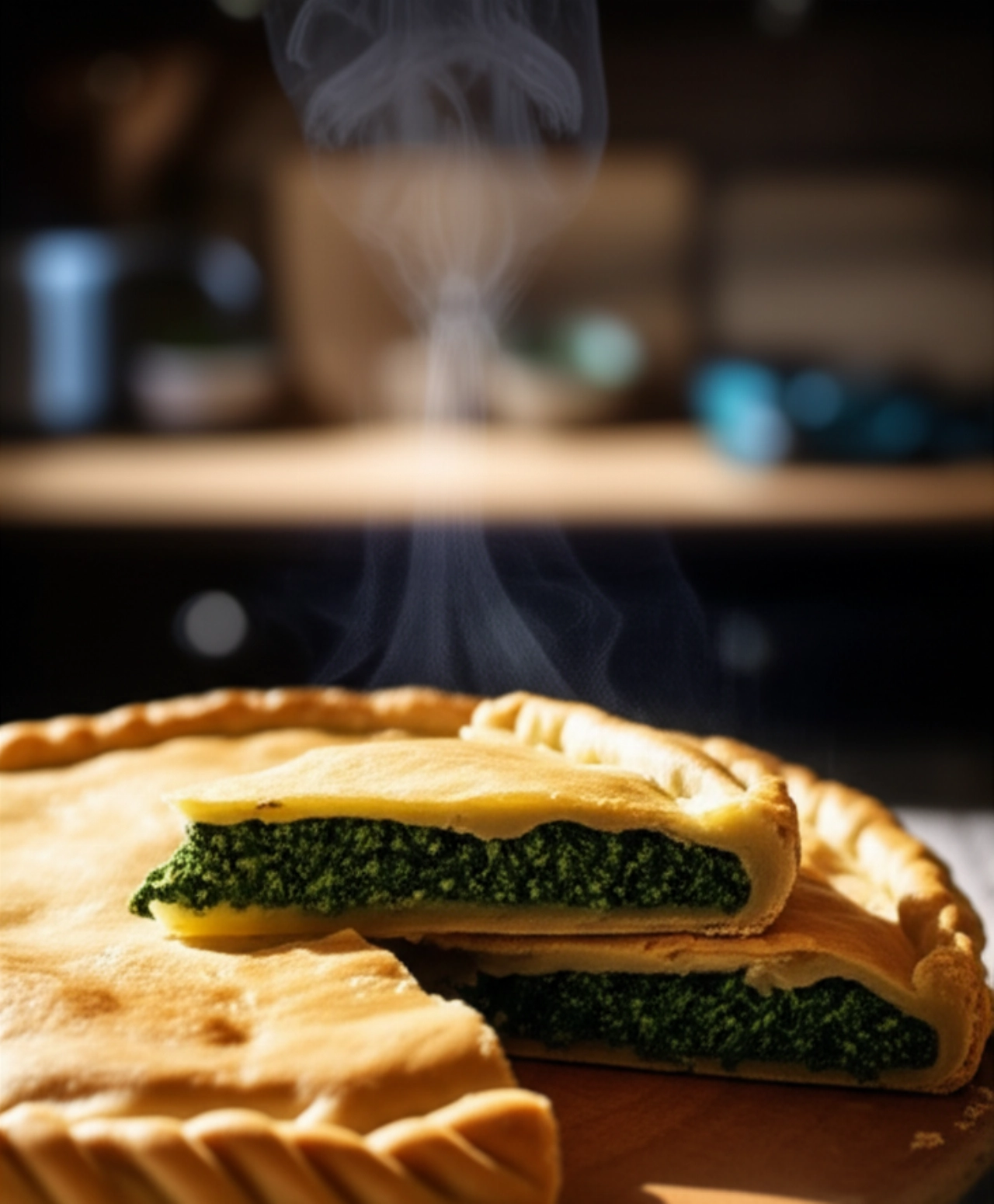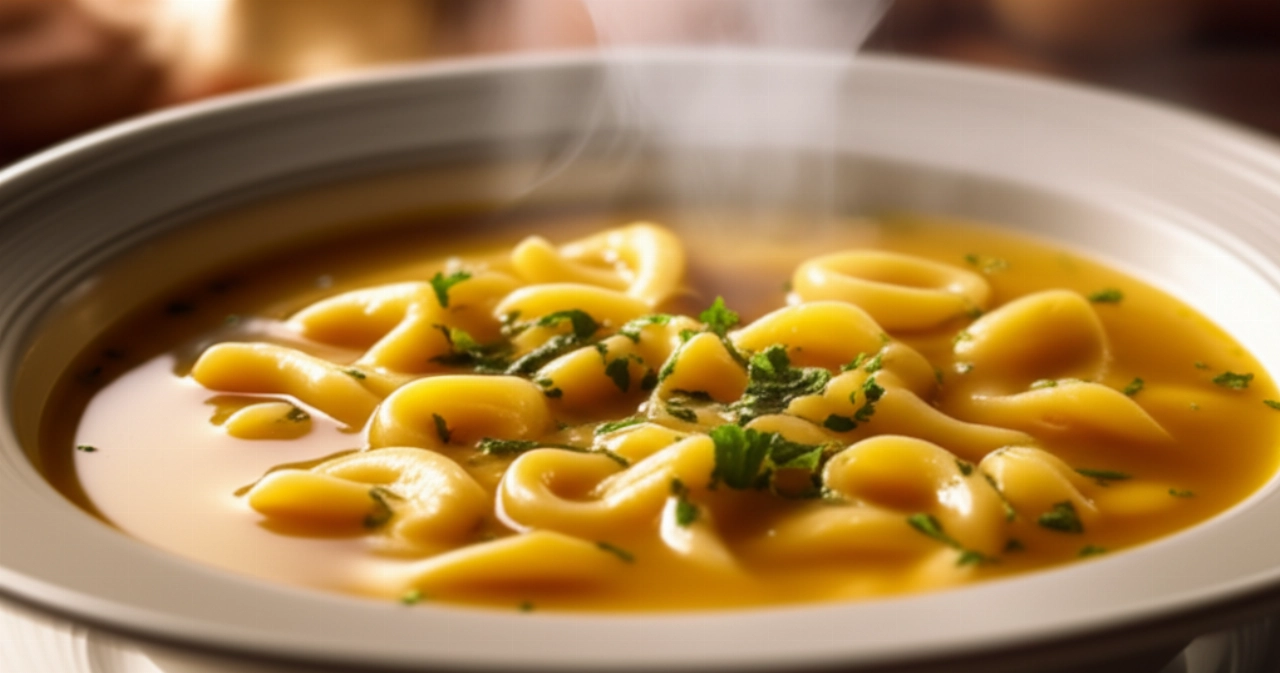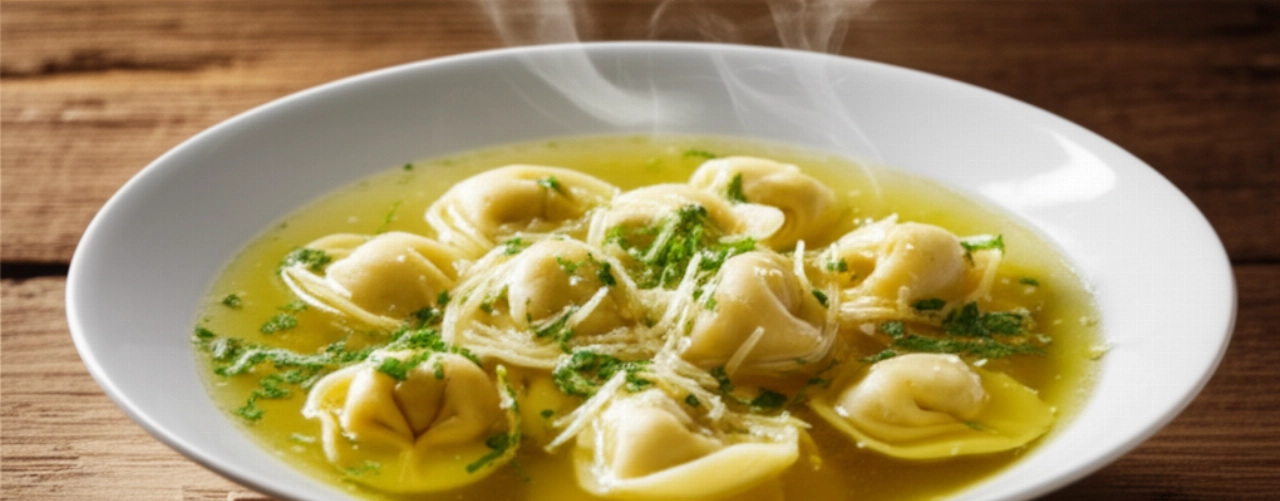There's a scent that smells of celebration, home, hugs... it's the unmistakable aroma of Tortellini in Brodo. A dish that, for us Italians, and especially for those with Emilian roots, is not just food, but a true ritual, a symbol of conviviality and tradition.
But how many times have you worried that the broth wasn't flavorful enough, or that the tortellini weren't perfect, like grandma's? The fear of making mistakes, wasting precious ingredients, and dedicated time is a deterrent for many. Finding the "true" recipe, one that leaves you no doubts and guarantees an impeccable result, can seem like a daunting task.
Get comfortable, because today I'm revealing all the secrets to preparing the best Tortellini in Brodo you've ever tasted. Not just a simple list of ingredients, but an infallible guide, full of tricks and practical tips, that will lead you to guaranteed success. Here, the taste of tradition is within reach, and you'll feel right at home, just as if grandma were guiding you step by step.
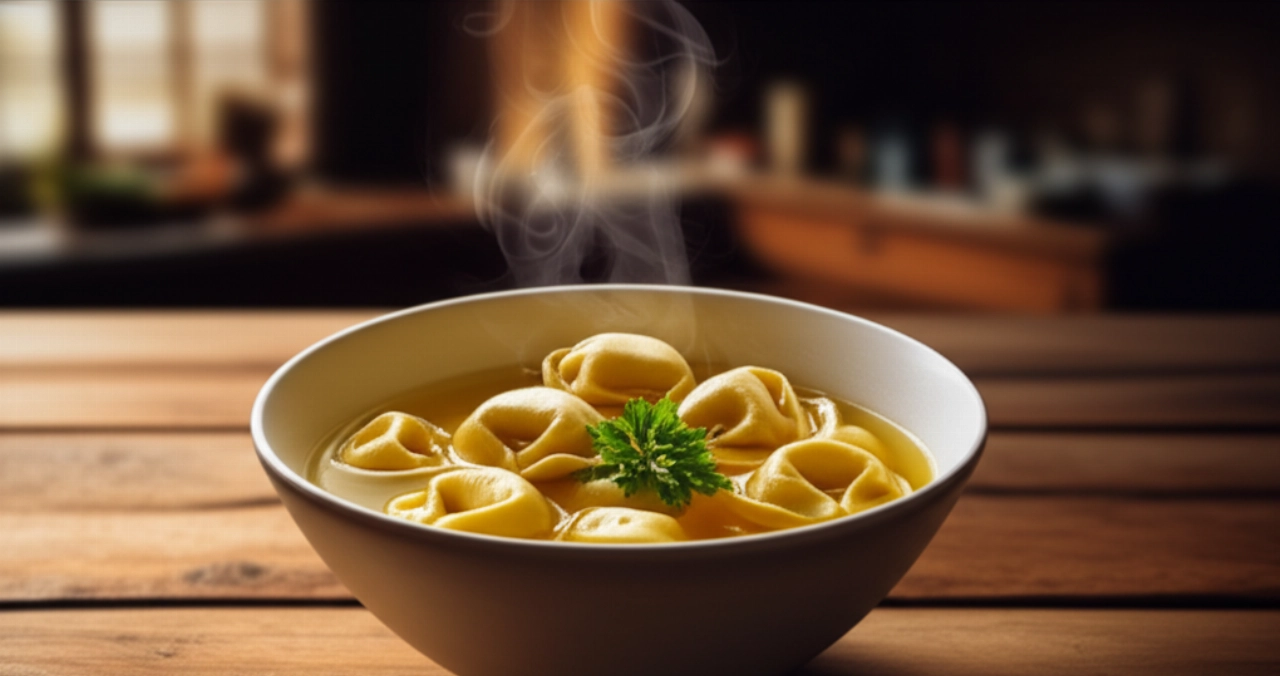
Smart Ingredients: The Choice That Makes a Difference
The secret to an exceptional dish begins with the quality of the ingredients. It's not just about listing them, but understanding the "why" behind each choice. Trust me, every detail counts!
For the Perfect Meat Broth (approx. 2 liters):
- Mixed Meats: One kilogram of mixed cuts is ideal. I recommend a piece of beef (such as muscle or brisket point, for flavor), a piece of hen or capon (for sweetness and fat that makes the broth richer), and, if you like, a veal knee bone (for gelatin and depth). This combination ensures a flavorful and balanced broth.
- Aromatic Vegetables: 2 medium carrots, 2 celery stalks, 1 large onion. Do not peel the onion completely; its outer skin will give a beautiful golden color to the broth.
- Coarse Salt: To taste, but add it sparingly at the beginning and adjust at the end.
- Cold Water: Approximately 3-4 liters. It's essential to start with cold water to best extract all the flavors from the meat and vegetables.
- Optional: A ripe tomato cut in half or a well-cleaned Parmigiano Reggiano rind. These add a touch of umami and color.
For the Tortellini Filling (approx. 500g, for about 1000 tortellini):
- Pork Loin: 150g. This is the base, providing tenderness and delicate flavor.
- Prosciutto Crudo: 150g (good quality, sweet). Adds savoriness and an unmistakable aroma.
- Mortadella: 150g (from Bologna, of course!). Its fat and aroma are essential for creaminess and typical taste.
- Parmigiano Reggiano DOP: 150g, aged at least 24 months. Don't skimp on quality; it's the flavorful heart of the filling.
- Fresh Eggs: 1 whole egg + 1 yolk. They bind the mixture and contribute to its softness.
- Nutmeg: A generous pinch, freshly grated. It's the distinctive aroma that completes the filling.
- Salt and Black Pepper: To taste. Be careful with salt, as prosciutto and Parmigiano are already salty.
For the Tortellini Pasta Dough (for the filling above):
- "00" Flour: 500g. It must be of good quality, for an elastic and resistant dough.
- Very Fresh Eggs: 5 medium whole eggs (approx. 50g each). Eggs should be at room temperature to mix better.
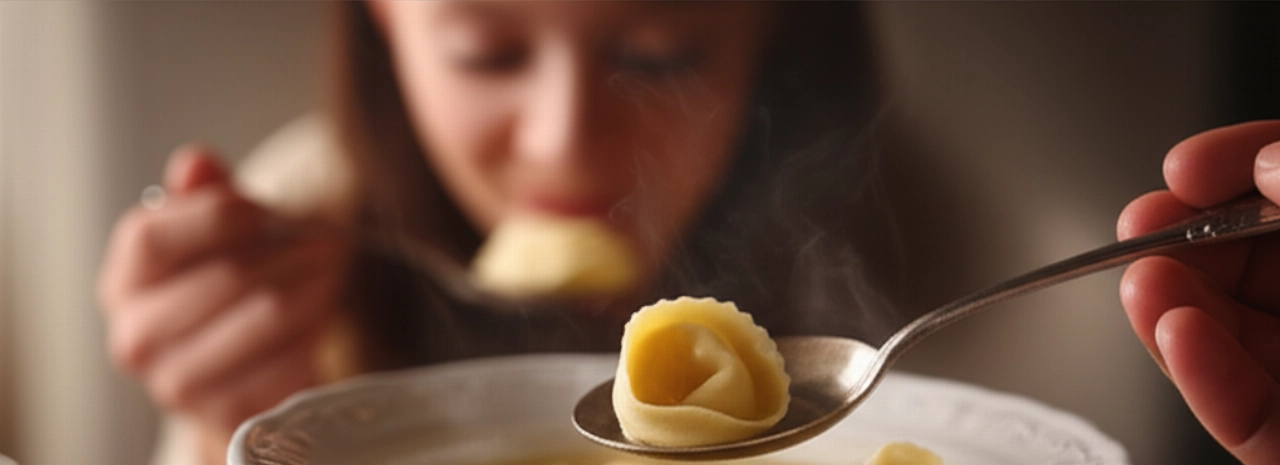
3 Mistakes Not to Make with Tortellini in Brodo (and How to Avoid Them)
Preparing Tortellini in Brodo is an art, but also a science. Here are the most common mistakes you might make and how your chef friend will help you avoid them, guaranteeing resounding success.
- Cloudy and Bland Broth: If the broth boils too vigorously or isn't skimmed properly, it will become cloudy. If you don't let it simmer long enough, it will be bland.
The Trick: Bring to a boil slowly, carefully skim off any impurities that rise to the surface. Then, lower the heat to a minimum and let it simmer gently for at least 3-4 hours. This extracts all the flavors without clouding.
- Tortellini That Break or Are Tough: Dough that is too thick will make the tortellini rubbery; too thin will cause them to break. A filling that is too wet or too dry can compromise the shape and consistency.
The Trick: The dough must be rolled out very thin, almost transparent, but resistant. For the filling, ensure it is well mixed and of the right consistency: it should be compact but soft. Don't overdo it with eggs in the filling.
- Unbalanced or Dry Filling: If the ingredients are not in the right proportions, the filling can turn out too salty, too dry, or lacking that "round" flavor one expects.
The Trick: Follow the indicated proportions for pork loin, prosciutto, mortadella, and Parmigiano. Always taste a small piece of the filling (perhaps by quickly cooking it in a pan) before stuffing the tortellini, so you can adjust the salt or nutmeg.

Grandma's Secret: The Magical Touch for an Unforgettable Broth
My grandma, when preparing broth for tortellini, had a small ritual. Before adding the vegetables, she would lightly toast the halved onion on a hot griddle until it was slightly charred on the surface. Then she would add it to the broth. This small gesture, which seems insignificant, gives the broth a more intense color and a slightly smoky aroma, a depth of flavor that makes it truly unique and unmistakable. It's a secret passed down from generation to generation, a true touch of love that makes all the difference.
Let's Prepare Tortellini in Brodo Together: The Step-by-Step Guide
Phase 1: Preparing the Meat Broth (the day before is ideal!)
- Prepare the Ingredients: Wash the vegetables well. Do not peel the onion; cut it in half. Wash the meat under cold running water.
- Start Cooking: In a large pot, place the meat, vegetables (carrots, celery, toasted onion if you followed grandma's advice), coarse salt, and cold water.
- Bring to a Boil and Skim: Slowly bring to a boil over medium heat. As soon as it starts boiling, you'll see a grayish foam rise: remove it with a skimmer. This step is crucial for a clear broth. Continue skimming until nothing more rises.
- Slow Cooking: Once skimmed, lower the heat to a minimum, cover with a lid leaving a small gap, and let it simmer gently for at least 3-4 hours (or even 5-6 hours for a more intense flavor). The slower it cooks, the more flavorful and clear the broth will be.
- Strain the Broth: Once cooked, turn off the heat. With tongs, remove the meat and vegetables. Strain the broth through a fine-mesh sieve lined with clean cheesecloth or a cotton cloth. This will ensure a crystal-clear broth.
- Cooling and Storage: Let the broth cool completely. Once cold, you can remove any excess fat that has solidified on the surface. Store in the refrigerator or freeze in portions.
Phase 2: Preparing the Tortellini Filling
- Grind the Meat: Cut the pork loin, prosciutto crudo, and mortadella into pieces. Pass them through a meat grinder (or finely chop them with a food processor) until you get a homogeneous mixture.
- Add Other Ingredients: Transfer the ground mixture to a large bowl. Add the grated Parmigiano Reggiano, the whole egg and yolk, and a generous grating of nutmeg.
- Mix the Filling: With your hands, work all the ingredients well until you get a homogeneous and compact mixture. Taste a small piece (perhaps by quickly cooking it in a pan) to adjust salt and pepper, if necessary. Cover and let rest in the refrigerator for at least 30 minutes.
Phase 3: Preparing the Pasta Dough and Tortellini
- Prepare the Dough: On a pastry board, form a well with the flour. Break the eggs into the center. With a fork, start mixing the eggs with the flour, then continue kneading with your hands for at least 10-15 minutes, until you get a smooth, elastic, and homogeneous dough.
- Let Rest: Wrap the dough in plastic wrap and let it rest at room temperature for at least 30 minutes. This will make the dough easier to work with.
- Roll out the Dough: Take a piece of dough and roll it out with a rolling pin or a pasta machine, rolling it very thin (it should be almost transparent, but resistant).
- Cut the Squares: With a fluted pastry wheel, cut the dough into small squares of about 3x3 cm.
- Fill and Close the Tortellini:
- Place a small amount of filling in the center of each square.
- Fold the square into a triangle, sealing the edges well.
- Wrap the triangle around your index finger, overlapping the two points and sealing them with gentle pressure.
- Arrange the tortellini on a floured tray, without overlapping them.
Phase 4: Cooking and Serving
- Heat the Broth: Bring the broth you prepared earlier to a boil. It must be boiling when you cook the tortellini.
- Cook the Tortellini: Gently drop the tortellini into the boiling broth. Cook them for a few minutes, usually 2-4 minutes, depending on the thickness of the dough and the size of the tortellini. They will be ready when they float to the surface and the dough is tender.
- Serve Immediately: Serve the tortellini in broth piping hot, accompanied by plenty of grated Parmigiano Reggiano.
Tips and Frequently Asked Questions about Tortellini in Brodo
Can I use only chicken broth?
Certainly, you can use only chicken or hen broth, but the mixed meat broth (beef and hen/capon) is what provides the depth of flavor and richness typical of the Emilian tradition. If you only use chicken, make sure it's free-range or good quality for a more intense flavor.
Can I prepare tortellini in advance and freeze them?
Absolutely yes! You can prepare tortellini in advance and freeze them. Arrange them on a floured tray without overlapping and place them in the freezer. Once frozen (after about 1-2 hours), transfer them to food storage bags. They can be stored for 2-3 months. Cook them directly from frozen in boiling broth, slightly extending the cooking time.
What's the secret to thin but resistant pasta dough?
The secret lies in the quality of the flour and eggs, and especially in letting the dough rest. Allowing the dough to rest for at least 30 minutes allows the gluten to relax, making the dough more elastic and easier to roll out very thin without breaking. And don't be afraid to use the rolling pin with energy, or the pasta machine down to the thinnest setting!
How do I prevent the broth from becoming cloudy?
For a crystal-clear broth, follow these key steps: always start with cold water, bring to a boil slowly, carefully skim off all impurities that surface, and maintain a very gentle simmer throughout the cooking time. Finally, strain the broth through a fine-mesh sieve and cheesecloth.
Can I vary the filling?
The traditional Emilian recipe calls for pork loin, prosciutto crudo, mortadella, and Parmigiano Reggiano. If you want to experiment, you can add a pinch of veal or some well-squeezed boiled spinach for a "greener" version, but for authenticity, I recommend sticking to the basic recipe at least the first time!
Your Masterpiece is Served: A Hug of Flavor
There you have it! Now you no longer just have a recipe, but all the secrets to bring a dish to the table that tastes of home, tradition, and love. Your Tortellini in Brodo will be a guaranteed success, a true embrace of flavors that will win the hearts of all your guests.
Don't be afraid to experiment, but start with this solid base and you'll see that applause will not be lacking. Cooking is a gesture of creativity and generosity, and with this guide, any fear of making mistakes will vanish.
Have you tried our recipe? We're very curious to see your masterpiece! Leave a comment below, tell us how it went, or share a photo on Instagram by tagging @CercaRicette.it. If you loved these tortellini, you can't miss our recipe for Ragù alla Bolognese, perfect for a rich first course, or the guide to preparing Homemade Egg Pasta, the base for many other delights.
